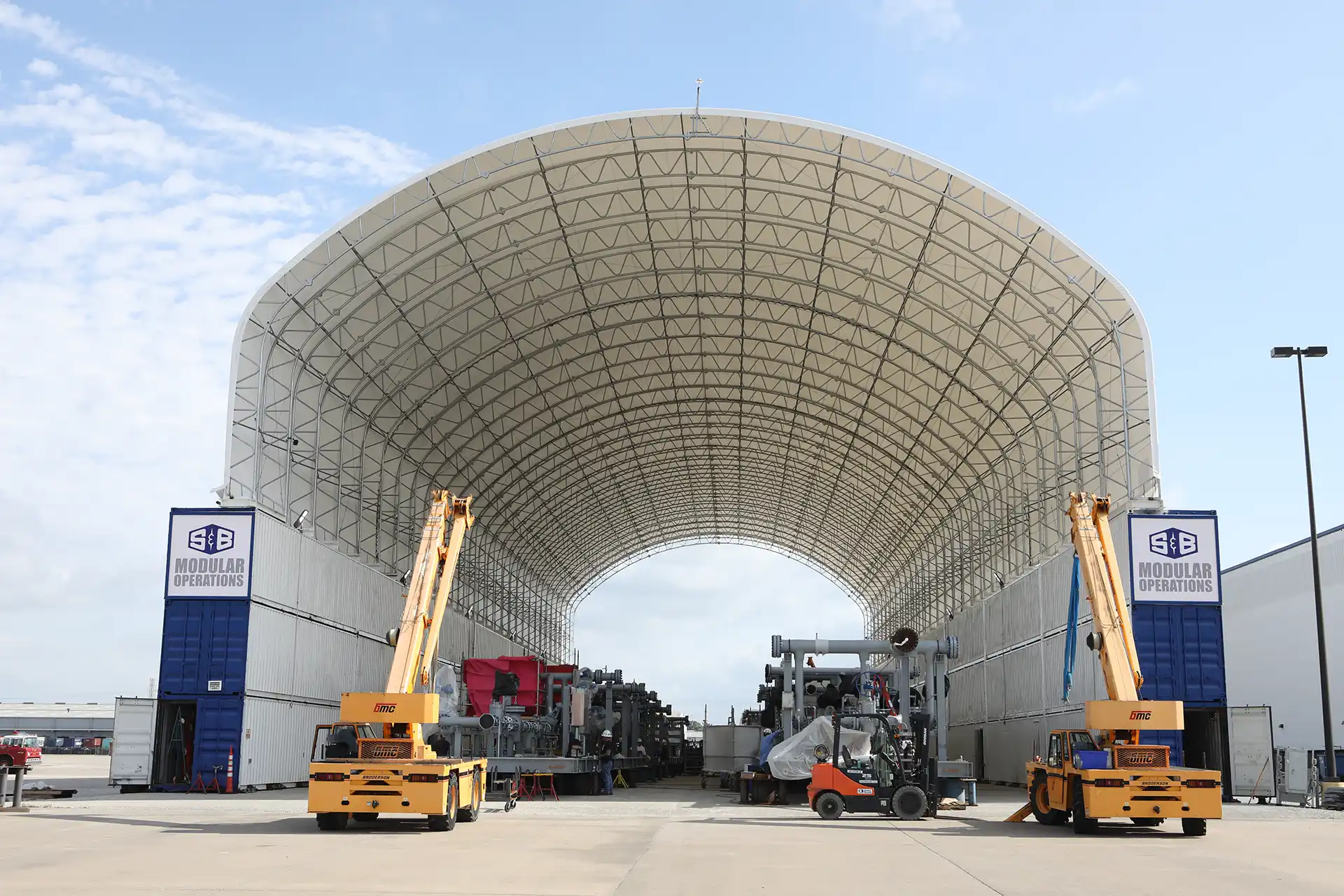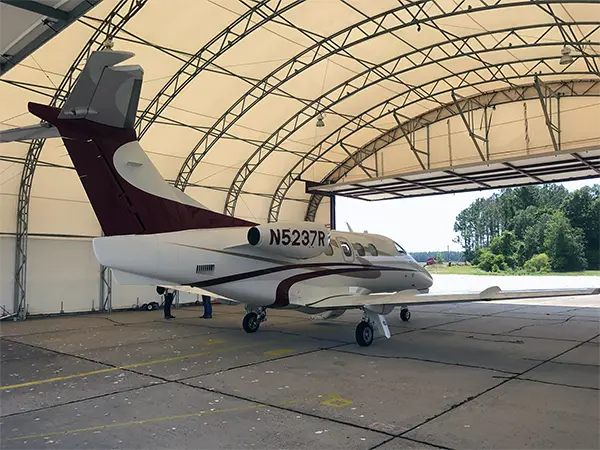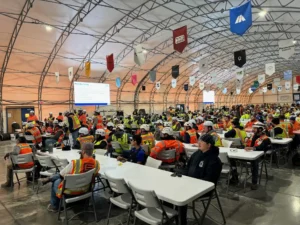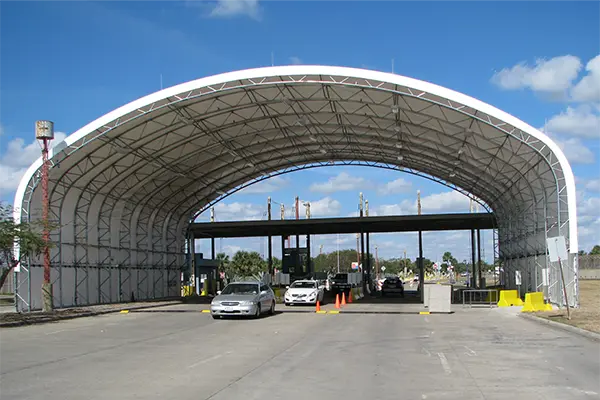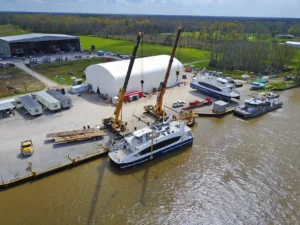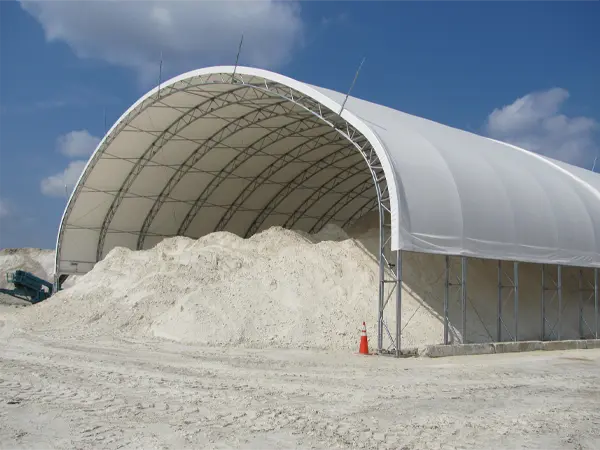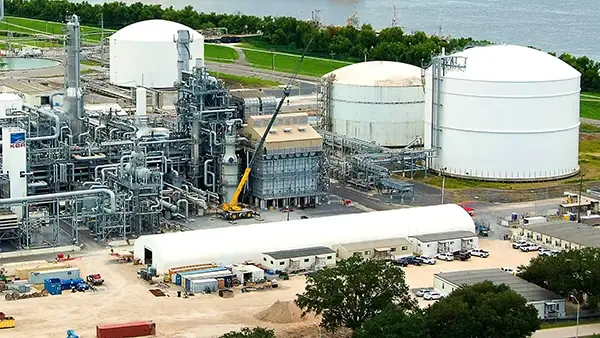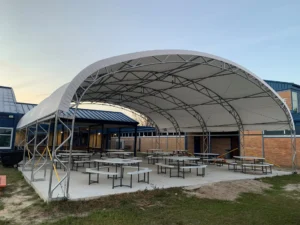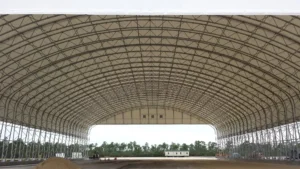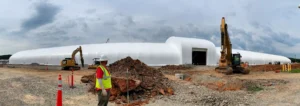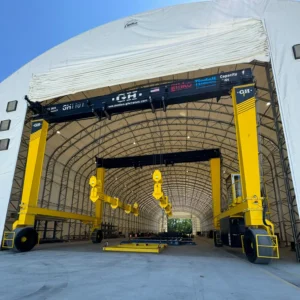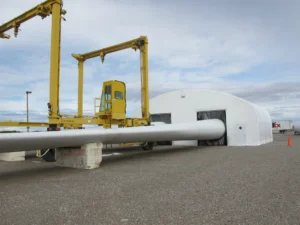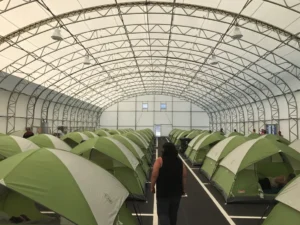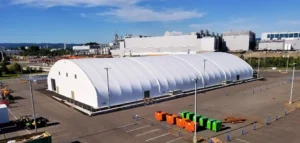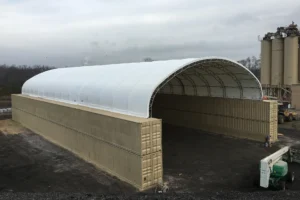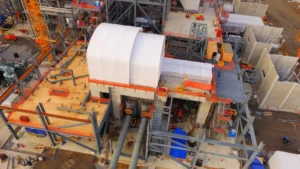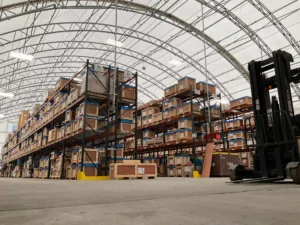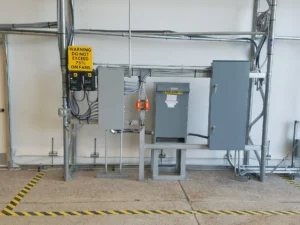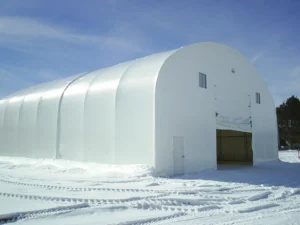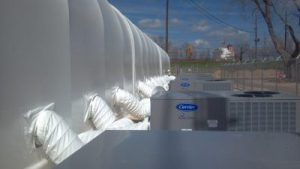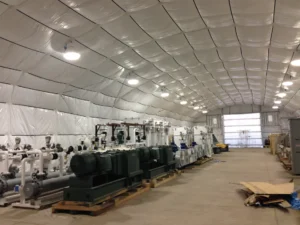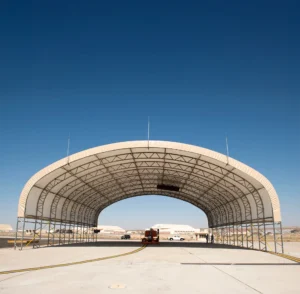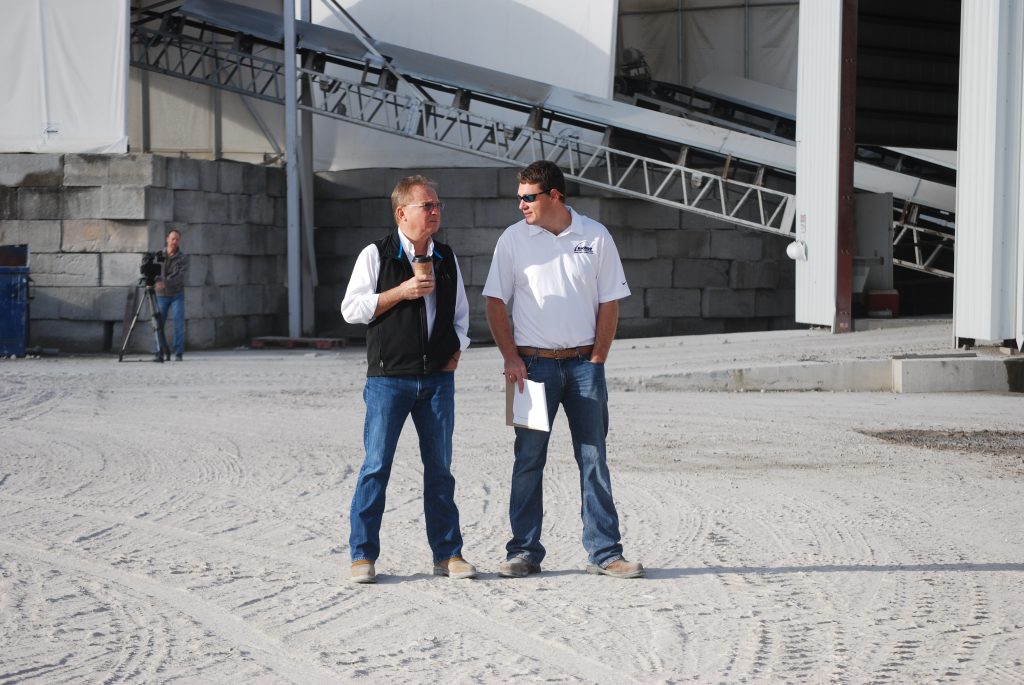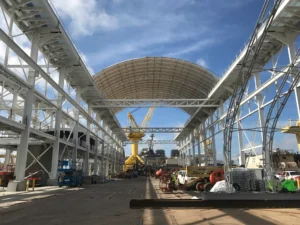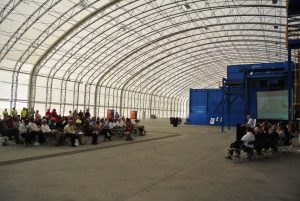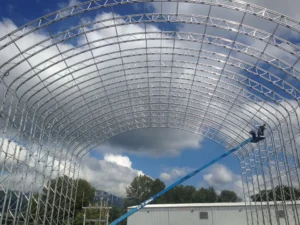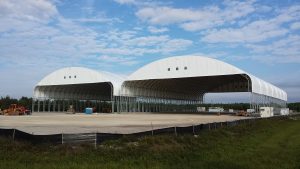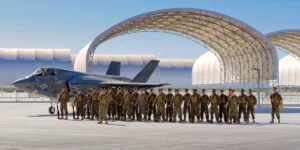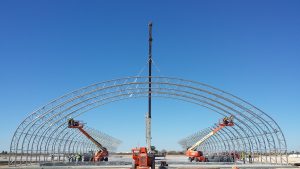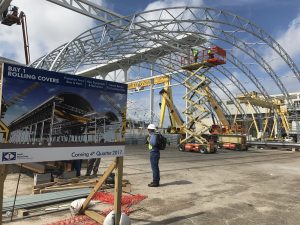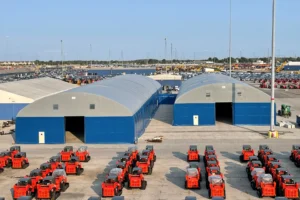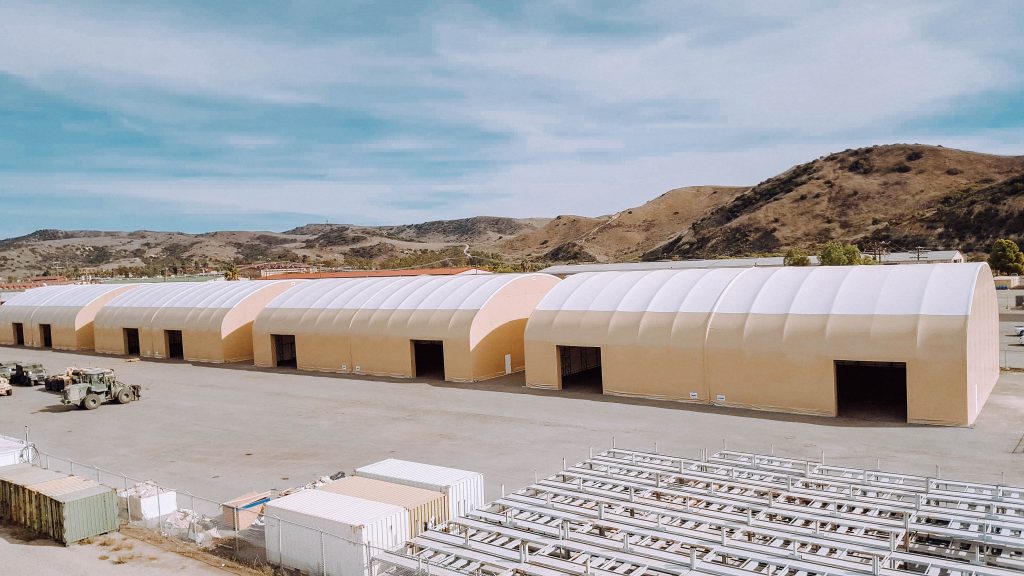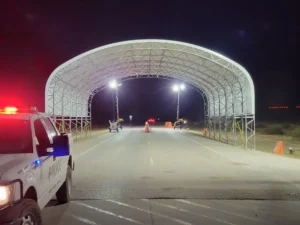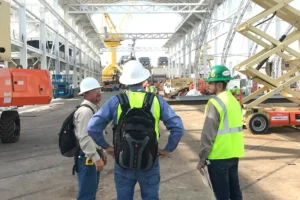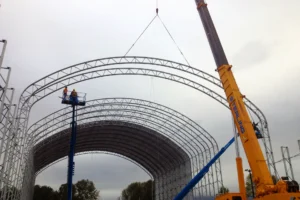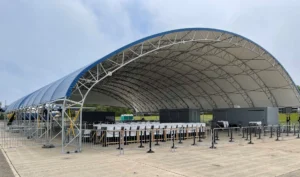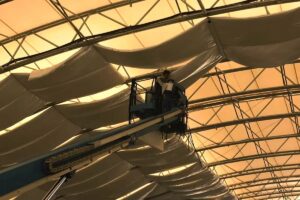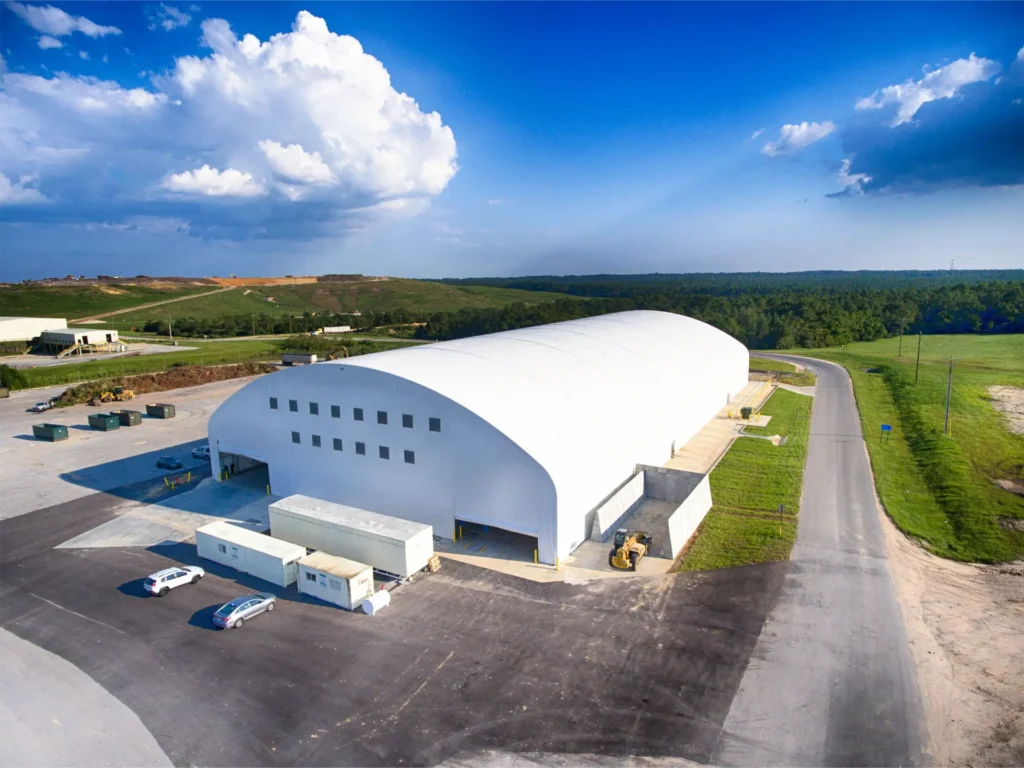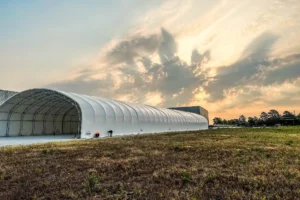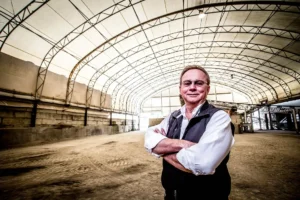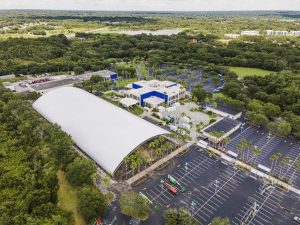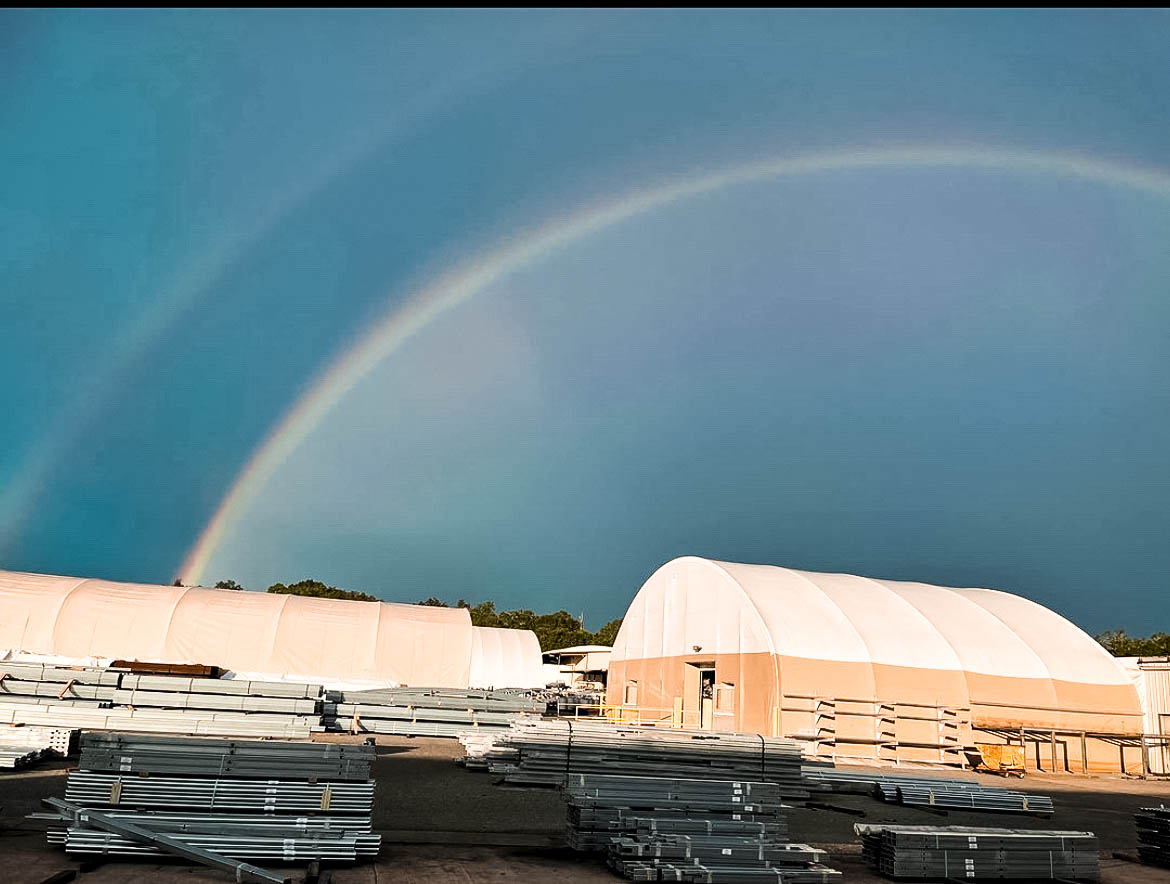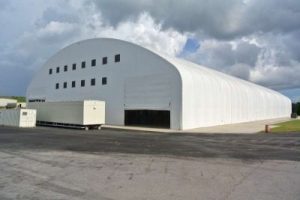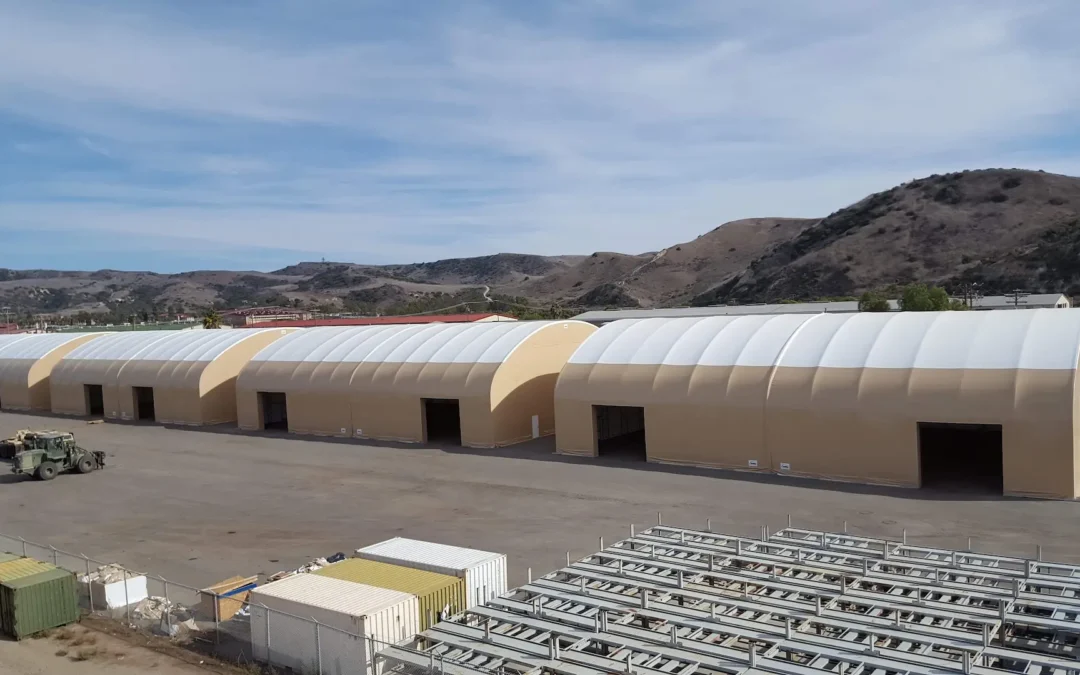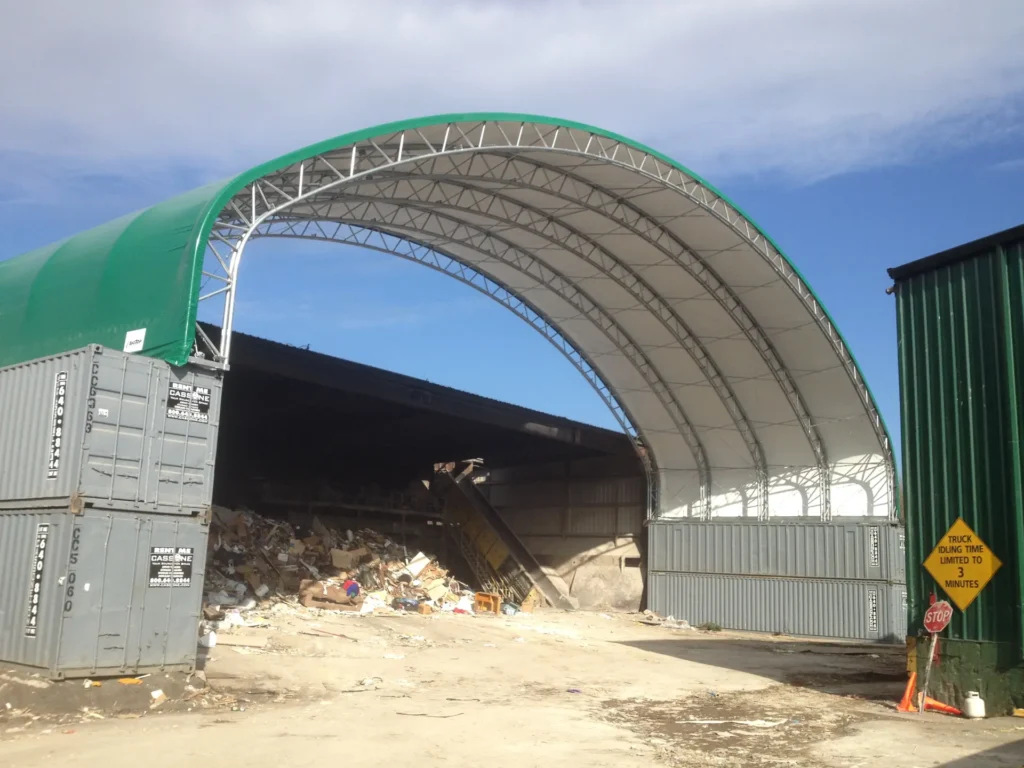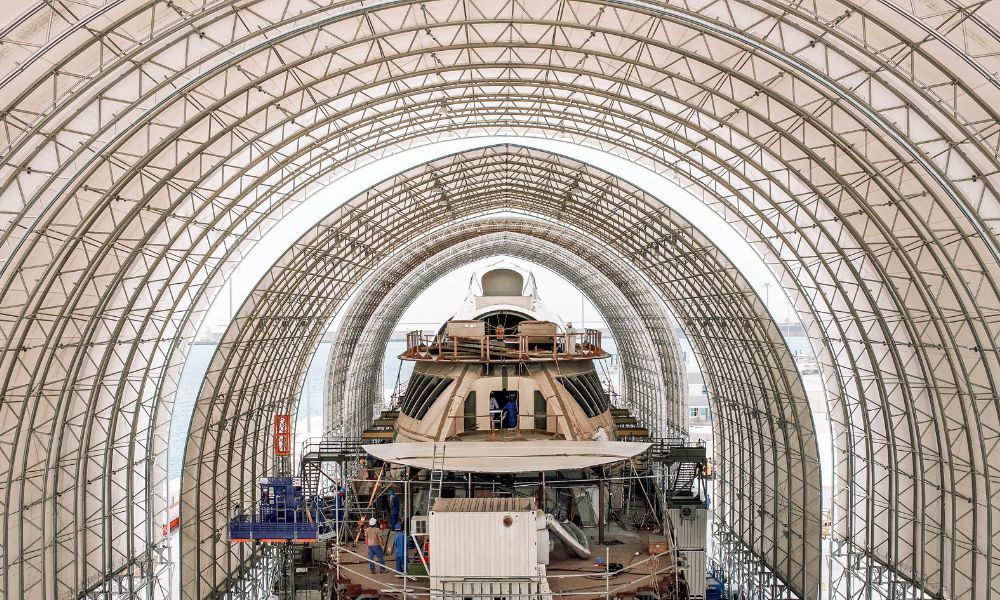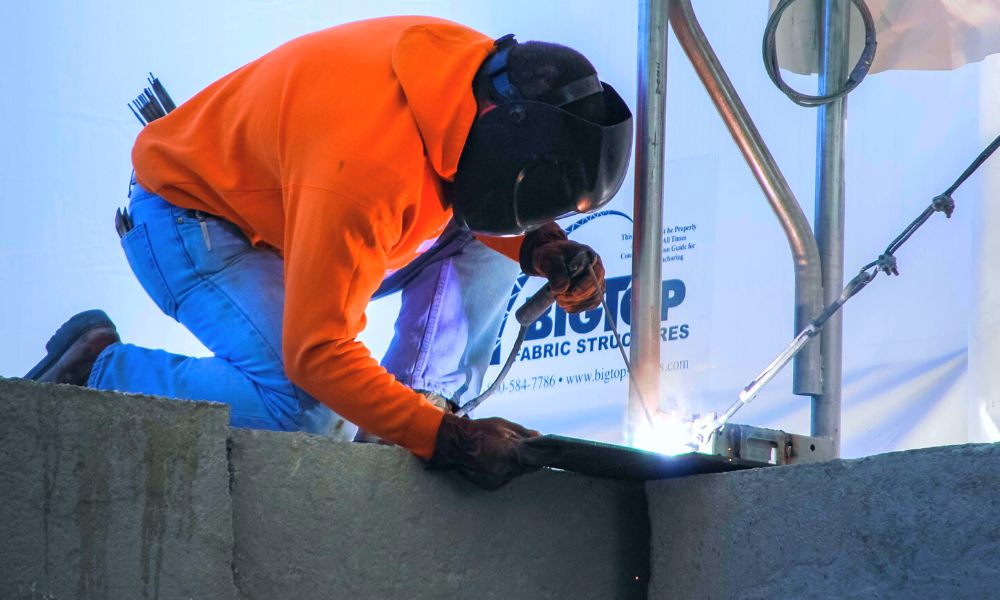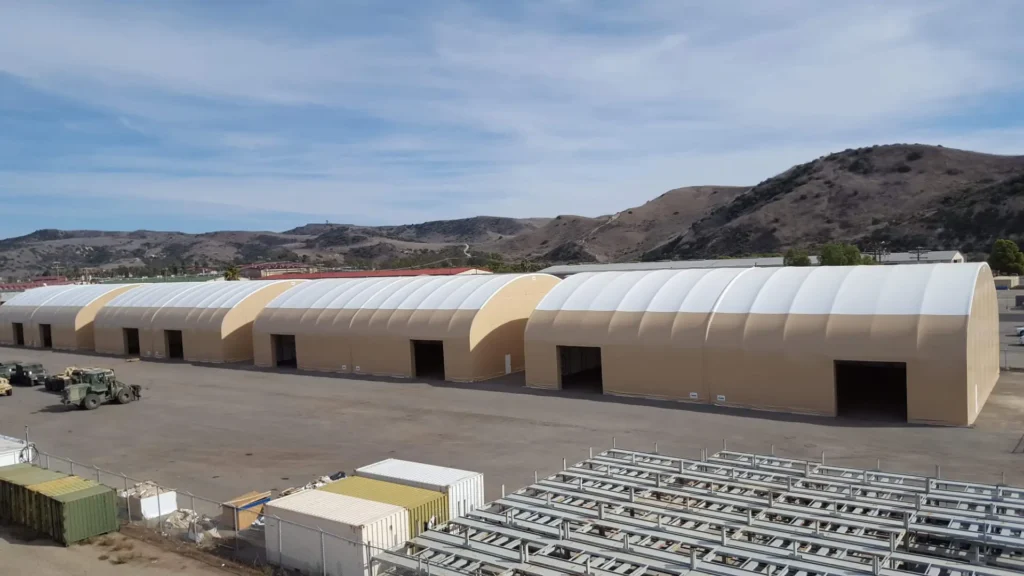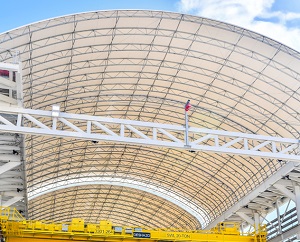Shinning a Light On The Secret Benefits of Fabric Buildings
Fabric structures have much more to offer than meets the eye. Because of their high flexibility, durability and cost effectiveness, fabric structures are often used in surprising ways across numerous industries—far more than most people realize. In fact, there are many benefits of fabric structures that remain hidden to even the biggest fans of the products! Let’s shine some light on the benefits of Big Top fabric structures.
What is a fabric structure?
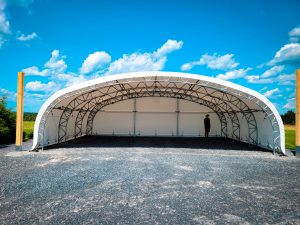
You know that feeling you get when you’re looking for something, but then realize it’s in the last place you checked? That is what you’ll experience with fabric structures. They are built with a lightweight frame and tensioned fabric material that can be assembled in a fraction of the time needed to erect most other structures. It also uses one tenth of the materials, which means less pollution and more efficiency.
The Secret Benefits of Fabric Buildings?
Although fabric buildings are gaining more popularity, they’re still something that many people aren’t familiar with and have only heard a little about. The benefits of fabric buildings are numerous, though, and if you consider the number of fabric building companies available today, it’s clear that people are starting to discover these advantages. Let’s take a look at three specific benefits you might want to consider as you weigh your options for your next construction project.
Quick to assemble
Fabric buildings offer many advantages for businesses and organizations, including quick assembly time, lightweight materials and low costs. Assembly of a single-story fabric building takes about 2 weeks, but can be done in less time if needed.
Costs less than brick and mortar
General buildings are typically made from brick and mortar. These types of construction require an investment for everything including land and labor. These buildings also tend to weigh a lot, which makes them tough to build on tough terrain or unstable ground. In contrast, fabric buildings are lighter than a traditional building which allows for easy installation in nearly any location without heavy machinery or large cranes needed to place it there. This also lowers initial costs. Fabric buildings also save energy costs because they’re constructed with lighter materials – no more concrete slabs!
Weather Resistant
- Waterproof – Whether it be for indoor or outdoor use, a leak-proof building is necessary for transporting goods, storing equipment, and protecting staff members. There’s no better way to prepare for potential natural disasters than with an insured, fire-resistant structure. The durability and resistance of these buildings cannot be beaten by traditional materials such as bricks and mortar.
- Fire resistant – Unlike traditional buildings, fabric structures do not need to be completely enclosed in fire-resistant insulation. Instead, they are made of lightweight panels and fabrics that can stretch and recover, while regulating the temperature.
- Snow load – Fabric buildings are made to handle snow loads. If snow is a element you fight against in your area then a fabric shelter is a great option.
- Strong Against Wind – There are many of examples where heavy winds are seen damaging brick and mortar buildings, while fabric buildings remain undamaged. Fabric buildings are secure to the ground in a much more efficient way then buildings built on top of concreate or wood frames.
Sustainable
Fabric buildings are much more sustainable than their typical counterparts. They require less labor and resources to make and assemble, can be assembled in half a day by as few as five people, are much lighter so they consume less energy while being transported to their desired location, and last longer because they do not rot or decompose. When you add up all these benefits, it’s no wonder that fabric structures have grown in popularity.
Energy efficient
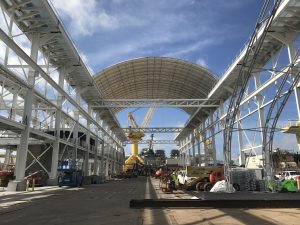
This is because fabric buildings are made from water and air, in a process which can be as sustainable as assembling a garden hose. They use less energy than typical steel and brick buildings, which means that they are better for our planet. And not only this – they require up to 45% less building material! This means that in addition to being more environmentally friendly, they can be cheaper too. This makes them perfect for homes who wish to save on costs without sacrificing their comfort or quality.
Has better soundproofing than a traditional home
If you are planning on moving to a place where sound can be an issue, or have a business in a noisy area such as near an airport or train station, then investing in building materials which have better soundproofing will work to keep your home quieter. When compared to traditional brick and mortar buildings, fabric buildings also provide better insulation from high levels of ambient noise while simultaneously being more energy efficient.
You can move it whenever you want
One of the more obvious benefits is being able to pick up and move a fabric building whenever you want. Because it is a tent like structure, it will be significantly easier to move in comparison with other types of buildings that would need heavy machinery to carry out such work.
Secondly, it has much more flexibility than other building structures which can’t adapt quickly enough to meet new needs. A fabric building can change its orientation so that it’s north-south in winter and south-north in summer, for example.
Eco-friendly materials are used to make them.
Fabric buildings are made up of different eco-friendly materials like steel and solar panels, which means less building materials are needed to construct them. With an average lifespan over 20 years, they produce lower emissions than other traditional buildings. Best of all, when the time comes to demolish a fabric building that has served its purpose, it is a simple process and provides significant energy savings.
Excellent noise absorption
Fabric buildings provide excellent noise absorption because their fabric walls are lightweight and dense. The open spaces inside the facility also allow for more sound to escape which means your voice will be heard better. A significant benefit to a fabric building is that it can control sound without any added features or structures, just through design and layout. Lastly, this type of structure provides an acoustically optimal environment for sound meaning people’s voices won’t boom or echo around like in most hard-shell rooms.
There are many benefits to a Big Top fabric buildings, and we’d love to tell you more. Give one of our experts here at Big Top a ring to learn the #1 secret benefit of fabric buildings!
